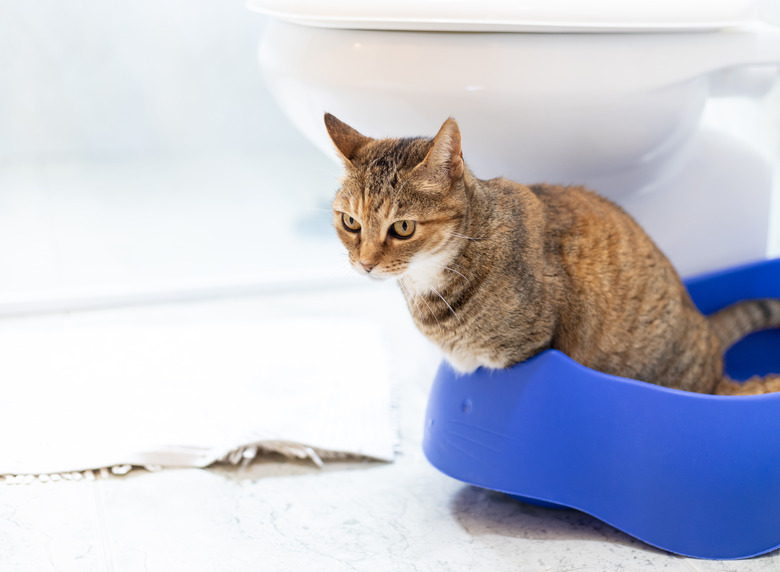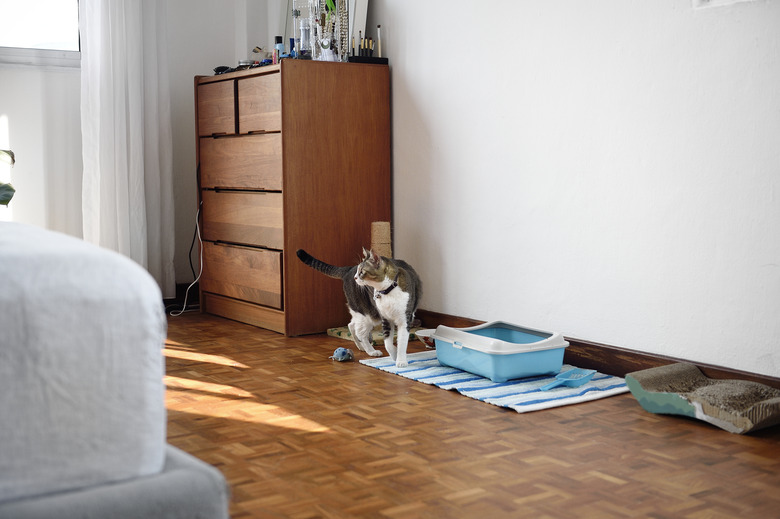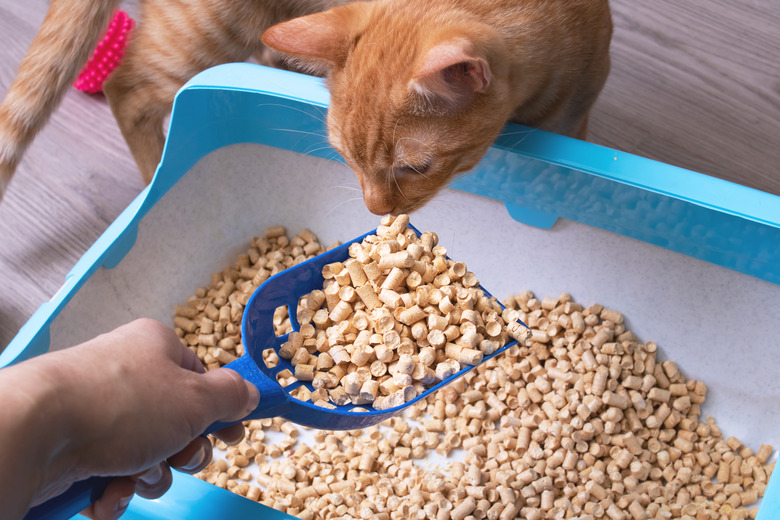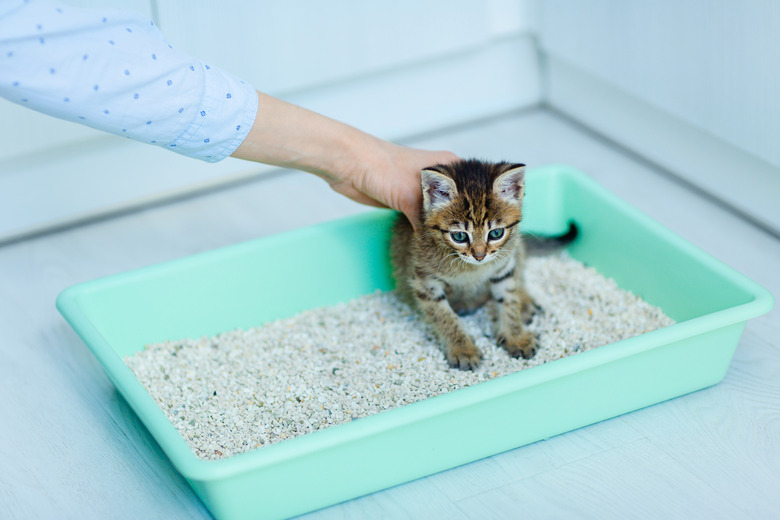6 Litter Box Issues And How To Troubleshoot Them
One of the most common issues cat owners run into with a cat is litter box problems. According to the ASPCA, at least 10% of all cats develop elimination problems. Some cats will develop litter box issues like complete aversion to their litter box. Others will have inappropriate elimination issues due to stress or medical issues.
When a cat starts to have litter box issues, the worry can weigh heavily on an owner who doesn't want to do all of that cleanup. Whatever the issue or cause, it's important for cat owners to address it. Below are some common reasons for cat litter box problems and solving them — before it leads to serious medical problems.
1. When a cat has a surface preference for their litter box
1. When a cat has a surface preference for their litter box
Most cats prefer certain types of surfaces where they prefer to defecate. They usually prefer a loose and sandy substance. This is why most house-trained cats will use a litter box to poop. Though sometimes cats will prefer to eliminate inside a load of laundry, a bed, or on a comfy rug.
What to do:
Pay attention to your cat's environment. Observe where your cat spends their time. If there are specific factors that have contributed to the problem address them. Maybe your cat uses an accessible load of laundry and prefers to go to the bathroom in it. Make the preferred location more appealing. Actions to take can include removing covers and liners from the litter box. If your cat is:
- eliminating on soft surfaces: try using high-quality and scoopable litter.
- eliminating on slick or smooth surfaces: try putting just a very thin layer of litter at one end of the box. Leave the other end bare to mimic the feeling of the original smooth surface.
- preferring to eliminate outside: add some soil to the litter box.
2. When a cat has a litter preference or an aversion
2. When a cat has a litter preference or an aversion
Cats have extremely sensitive senses of smell and touch. They help them to navigate through their environment. However, these sensitivities can also influence a cat's reaction to their litter. Cats who are used to one kind of litter might have issues eliminating in a different type of litter.
What to do:
Let your cat choose their own litter. Most cats prefer unscented and clumping litter. Your cat may also prefer the type of litter they used as a kitten because it feels comfortable and familiar. If your cat is turning their nose up at your choice of litter, it's time to opt for another one. Try different types until your car feels comfortable eliminating inside their litter box.
3. When a cat has a location preference for the litter box
3. When a cat has a location preference for the litter box
If a cat does not like the location of their litter box, they will not go to the bathroom there. A cat may avoid locations they don't like. This means they might avoid their litter box.
What to do:
- Try putting a litter box on every level of your house. Put the litter box in different locations and see how your cat responds.
- Make the undesired eliminating location unappealing. Prevent your cat from going to the bathroom in that location. One way is to try covering the area with an upside-down carpet runner.
- Move the litter box from the undesired location to the desired one over time. When your cat has been consistently using the litter box in the undesired location, gradually move it to a more convenient location. Do this about an inch a day to get your cat used to this transition.
4. When a cat is experiencing stress from another cat at home
4. When a cat is experiencing stress from another cat at home
Sometimes a more senior cat in a multi-cat household can control and prevent access to the litter boxes. Any conflict between cats in a home can produce a stressful environment leading to litter box problems. If there is enough stress, it can cause a cat to develop an elimination problem. Any sort of conflict between cats in a household can produce enough of a stressful environment to cause common litter box problems like this one.
What to do:
- Figure out which cat is the one soiling outside of the litter box. A veterinarian can provide a cat owner with fluorescein, a harmless dye, for one of your cats. The dye will cause a cat's urine to glow blue under ultraviolet light for about 24 hours.
- Temporarily separate your cats one at a time. This will help to determine which cat has been eliminating outside of the litter boxes in your home.
- Make sure each cat has their own litter box and they are separated. Sometimes, if a cat is having behavior problems, it could just be that they need a proper place to rest.
- Try synthetic pheromone sprays or diffusers. Spraying pheromone sprays can sometimes help reduce generalized stress for cats.
5. When a cat is experiencing stress at home
5. When a cat is experiencing stress at home
If your cat is leaving feces in places other than their litter box, general household stress could be to blame for their improper litter box use.
What to do:
- Identify any and all sources of stress in your cat's environment.
- Do not move around their food bowls.
- Keep a steady feeding routine with your cat's food.
- If you have a dog in the house, prevent them from chasing or antagonizing the cat.
- If you can't eliminate the sources of your cat's stress (like a new cat, new pet, baby, or dog) try to reduce their interactions and increase them slowly over time.
- Allow your cat space and privacy to eliminate.
6. When a cat has a urinary tract infection
6. When a cat has a urinary tract infection
Your cat may have stopped using the litter box because of a urinary tract infection (UTI). A urinary tract infection can make urination very painful for a cat. If you notice your cat frequently entering their litter box and only producing small amounts of urine, they may have an infection.
Once a cat has had painful urination in their litter box, they go on to associate the pain with the litter box. They will quickly develop an aversion as a result. A medical condition like a urinary tract infection can leave a cat confused and an owner worried about their feline's health problems.
What to do:
First, it's important to keep a cat's litter box clean. Scoop the litter box at least once a day. Clean all litter boxes with warm water and unscented soap, baking soda, or no soap, and completely replace the litter every week. For convenience's sake, you may want to invest in a self-cleaning litter box.



